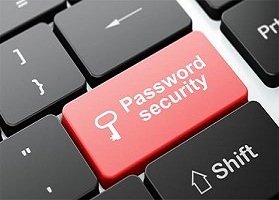
Best Techniques to Manage Saved Passwords:-
One of the crucial attributes of working on the Web needs to remembering a bunch of login/ password pairs. Using the same combinations for all resources is only as reliable as the weakest of the site. Therefore, using the name and password of your bank on a start-up is a bad idea.
For those whose memory is shorter, then there are several ways through which you can easily manage saved passwords. Always setting a new password and retaining it for a long time is the toughest job, especially when you’re a manager and team leader. If you’re an IT company in Abu Dhabi then follow these below-mentioned tips:
- Text file. It is the easiest way. Each time you enter a new password, put it in a text file, Excel spreadsheet, or any other format convenient for you. The problem with this approach is that if a file falls into someone’s hands, all passwords will not be secret anymore. However, with the help of Managed IT services in Abu Dhabi, you can encrypt the data, for example, using True Crypt, just in case.
Let the browser remember everything for itself. Modern browsers can remember your passwords and substitute them automatically when visiting sites. In this case, you are tied to a specific browser instance. You can get around this in Firefox using a portable installation, either using password exporter or relying on the experimental features of Mozilla Weave.
- Use special storage. Many applications are designed to provide secure password storage on the client machine for ex CiphSafe for OS X or PassKeeper for Windows. This is much more convenient than manually encrypting the file. However, there may arise incompatibility issues between different operating systems.
- Use a password manager. Such programs help both generate and save and automatically substitute your passwords. For Windows, you can offer RoboForm, and for OS X – 1Password. The problem with this approach is apparent: it is difficult to synchronize multiple computers.
- Generate passwords as needed. A similar strategy is followed by Password Maker. This program is available for Firefox, Windows, Mac OS, and other access methods, including widgets. In this case, the master password is generated and the URL of the site is protected by this password.
- Use online storage. Applications like Clippers or my1Password (beta) store all your passwords as encrypted data, accessible only with your master password. To get the password you need, you will need to go to the site and enter the master password. The solution to compatibility problems is a person, but the convenience of such solutions is a matter of personal preferences.
- Use the proxy service. This approach is implemented, which allows you to register one account, and then with the help of it enter into various Web applications. This service stores names and passwords for you, the only question is how much you trust their security.
Tips to make your passwords more secure:-
- Use different arrangements of passwords for each account you have.
- Log out every time you use a public device or if people around you can see when you type your password. You could also use browser private browsing methods if you are not using your computer.
- Try not to write passwords on public computers, such as libraries. Many times systems have malware that steals passwords.
- Use security software and update it regularly.
- Do not share your password with anyone. Even if you trust a person now, there is no guarantee that you will have the best intentions for yourself in the future.
- Avoid entering passwords on a device when connected to a Wi-Fi network without security, such as in a cafeteria or an airport.
- Strong passwords are harder to guess and more comfortable to hack. For example, try changing letters to numbers. For example, instead of Indiana, you can create the password 1nd1 @ n @.
- Use mixed numbers characters, upper and lower case letters, and symbols in your password.
- Depending on how sensitive the information is, you should change all your passwords periodically, and avoid reusing them for one year.
- Include non-standard characters, such as ñ, $, % ë â…
- Verify the strength of your password. If the website includes one, be sure to listen.
- Feel free to type your passwords, but not near the computer but in a safe place.
- Create clues to remember passwords.
- Use your keyboard as a palette to create a shape that is easy to remember. For example, @ wsXdr5 makes a V shape when it starts writing from @.

